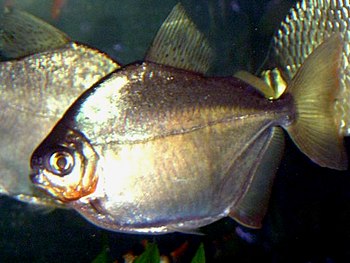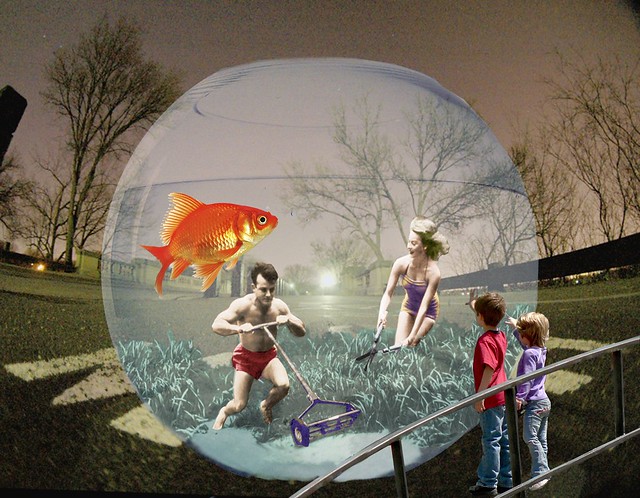 |
| A photograph of the Silver Dollar (Metynnis argenteus). (Photo credit: Wikipedia) |
In addition, the fish prefer to live in a large tank and reside with their own species. This fish has a natural side, which promotes him to destroy plants, which include Vallisneria plants. In a couple of days, you will be purchasing new plants. Therefore, it is important that you feed this fish when he is hungry. The little fellers like lettuce, sprouts, spinach, as well as meaty dishes.
Metynnis Lippincottianus tend to enjoy moderate soft water conditions, as well as faintly acidy waters. Metynnis Lippincottianus fish will breed, as well as produce hundreds of eggs at a given time. The eggs usually hatch in a few days. Prepare for an army.
Shreitmueller or Metynnis hypsauchen originates from Amazon Basin areas. The fish grow 6 inches in size a have strong pressed oval-shaped bodies. The fish has behaviors similar to the Metynnis Lippincottianus; as well, their feeding patterns, habits, etc are similar. In addition, Metynnis hypsauchen has similar water condition demands as that of the Metynnis Lippincottianus fish.
The only significant differences between the Metynnis Lippincottianus fish and the Hypsauchen is that these fish lay thousands of eggs in one hatching. This requires that you prepare for a larger army, which the hatchlings must have a water temperature of 82 degrees.
Gymnocorymbus Ternetzi
This fish group is commonly known as the Black Tetra. The fish is also known as the Petticoat and Blackamoor Fish. Gymnocorymbus Ternetzi comes from Bolivia, Argentina, and Brazil and grows up to 2 inches in size.
The fan-like fins, anal, and dorsal is often black. The jet-black species have 2-vertical black coated bars that line the silver sides or flanks. This is a good tank fish; however, the fish have instincts to nibble at other fish fins. The fish enjoy dry foods, as well as a variety of foodstuff. Gymnocorymbus Ternetzi does not place a high demand on the water conditions. The water temperature should remain at 68 degrees or 70 degrees Fahrenheit. You can breed these fish in moderately hard waters or neutral waters. The fish lay hundreds of eggs, which hatch in one day. Hatchlings require infusoria foodstuff at the start.
Pristella Maxillaris otherwise known as X-ray fish, Pristella, or Goldfinch come from the Northern South American areas. The fish only grow around 1 and a half inches in size. Pristella has transparent bodies. This fish is ideal for commune tanks since the fish is passive in nature.
Pristella Maxillaris will feast on all foods and require water conditions or temperature set between 72 degrees and 78 degrees Fahrenheit. This fish lays up to 500 eggs and is one of the easier to breed specimen. The hatchlings are usually delivered in one day.
In all, you will find a wide array of fish at pet stores. Each specimen has its own needs, yet many are similar in nature. Additional fish include the Hemigrammus Erythrozonus species, Hyphessobrycon Flammeus breeds, and the Paracheirodon innesi. Hyphessobrycon pulchripinnis is space available. If you are just starting out avoid the Piranhas and the Characin species. The carnivores will eat other fish, as well as fleshy dishes. Piranhas are better left for fish experts to maintain.






